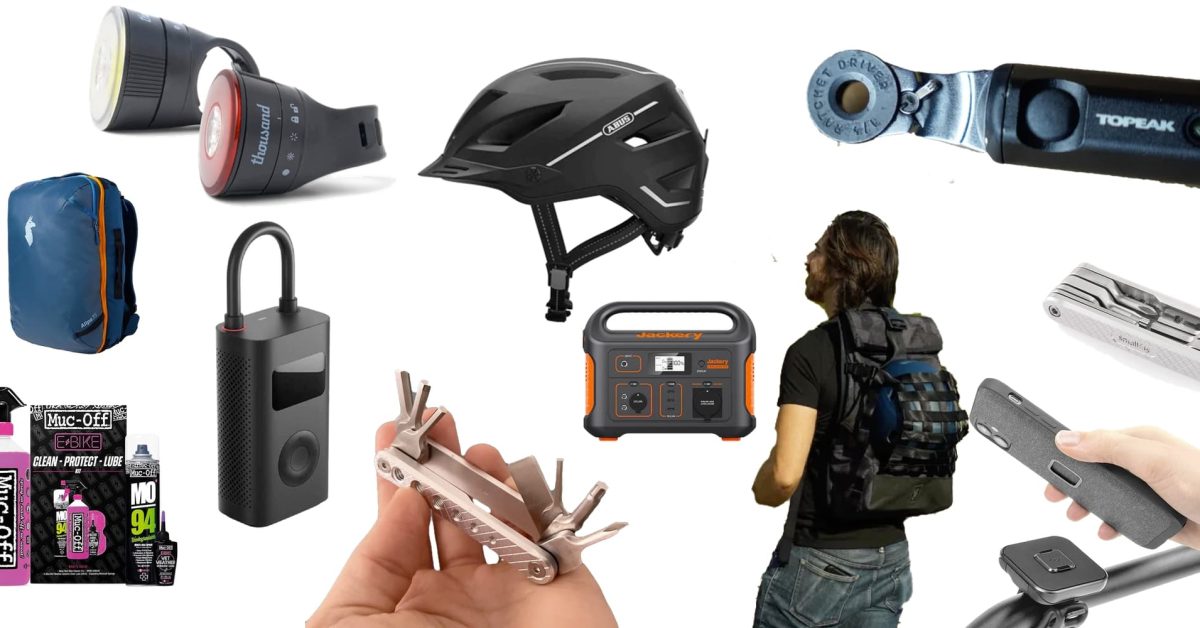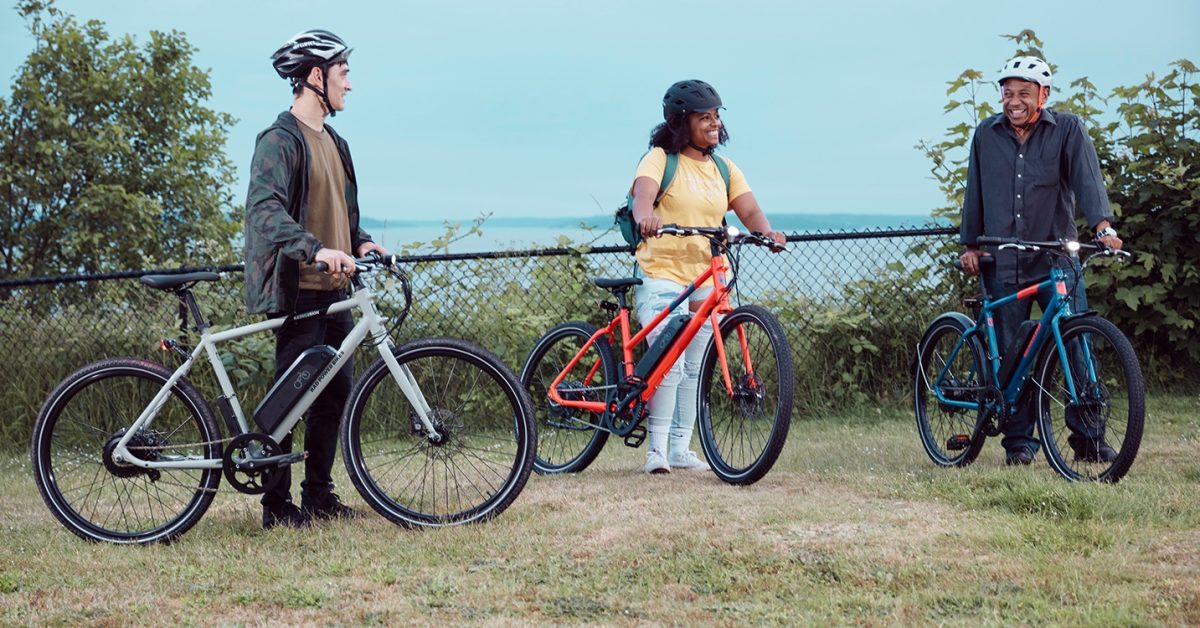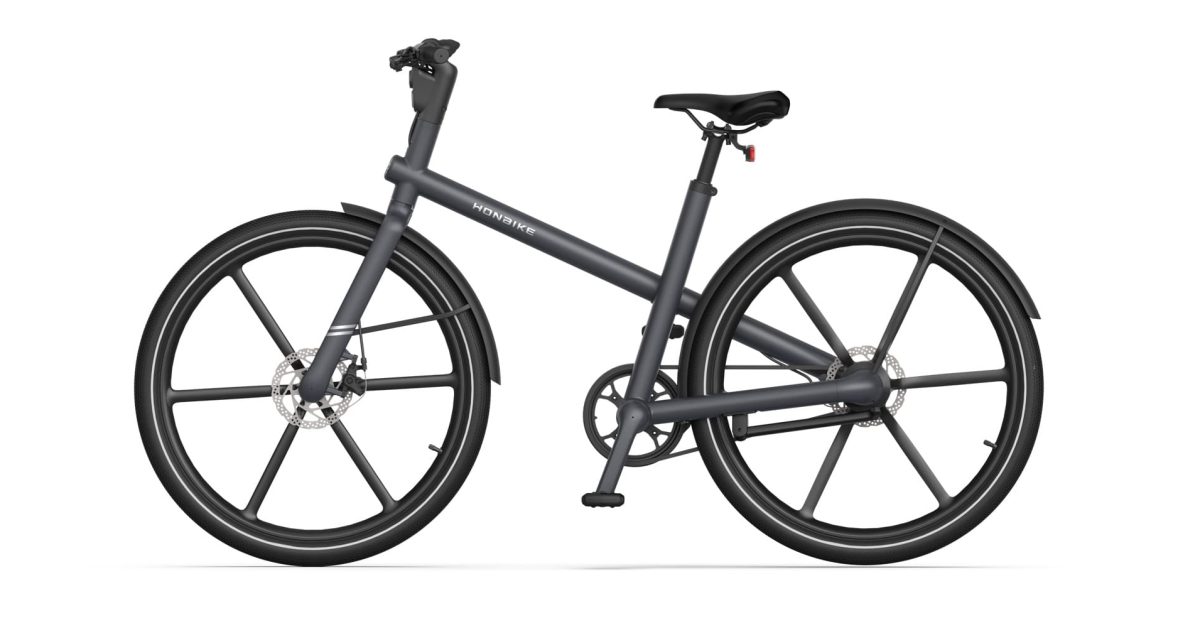[ad_1]

Sure, we’d all love a new e-bike for Christmas. Or for Hanukkah. Or Kwanzaa, Chinese New Year, Las Posadas, Boxing Day, or did I miss any other good winter holidays? The point is, an electric bike would be great, but it’s those other small accessories that can really help make the ride even better. So here are some of the smaller but no less important pieces of cycling gear I’ve been testing this year, which just might make a great stocking (or latke) stuffer for the cyclist in your life.
If you’re looking for an actual e-bike to give as a gift, we’ve already got a great roundup over here.
And just a note, this list includes around a 50/50 mix of gear I’ve bought for testing and gear sent to me for free from the companies. If I bought something, I’ll say it. The rest were media samples. We get sent a lot of crap all year. Only the stuff that’s actually good shakes out in the end to land on this list.
So let’s get this party started!
Topeak Ratchet Stick
The Topeak Ratchet Stick is probably my favorite bike tool of all time.
It doesn’t have every tool in the box, but it has most of the hex driver sizes you’ll need for common tasks (adjusting brakes, saddles, racks, etc.), and then the second plastic holder that snaps onto it carries even more drivers that you probably don’t need as often (mostly the Torx drivers).
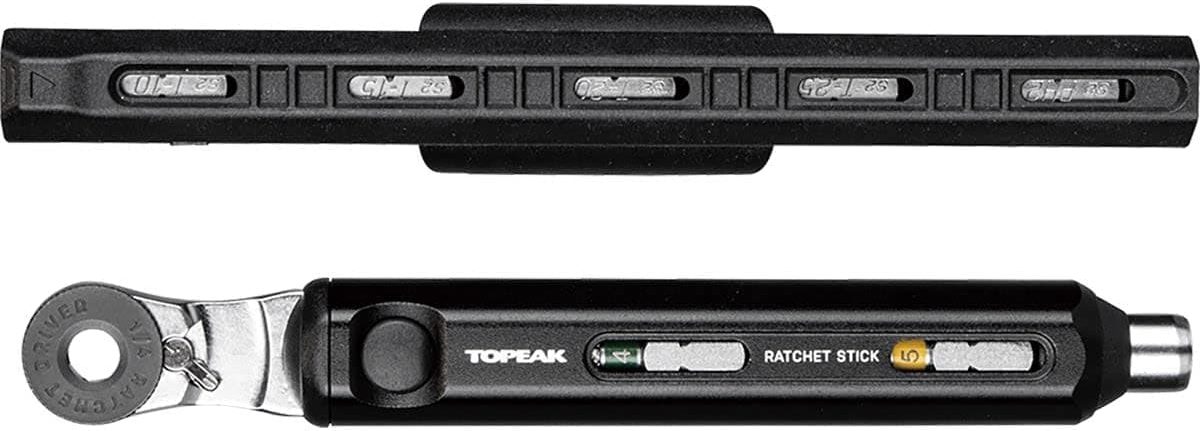
To be honest I don’t even know where the second plastic holder with the other drivers is anymore, I’ve probably long since lost it in the bottom of my bike parts bin. That’s how infrequently I need any of those extra bits. The five drivers that fit in the handle are all that I use on a daily basis.
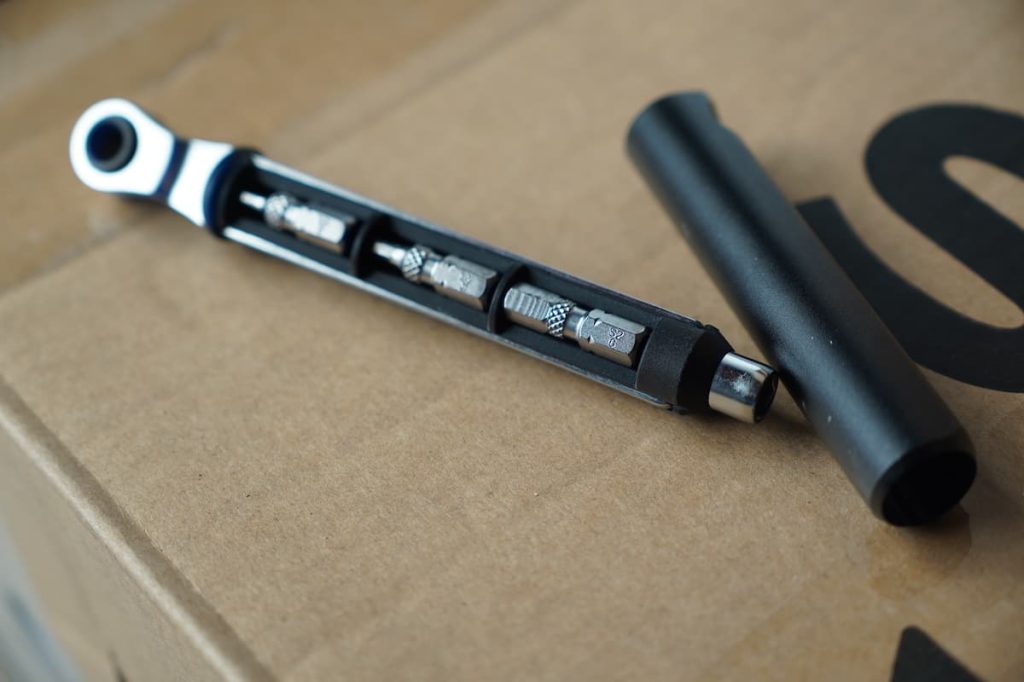
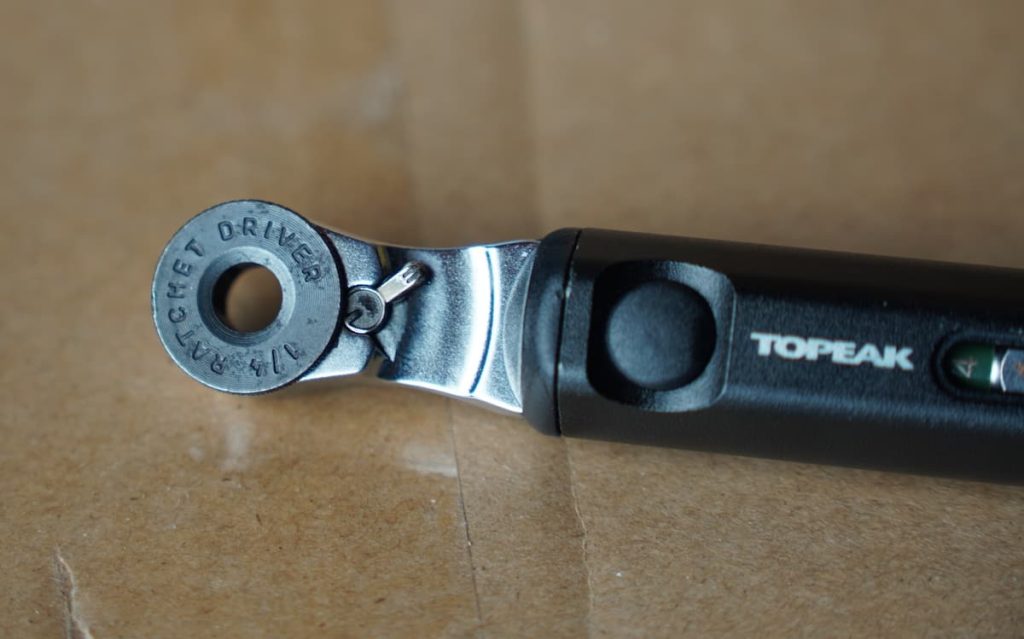
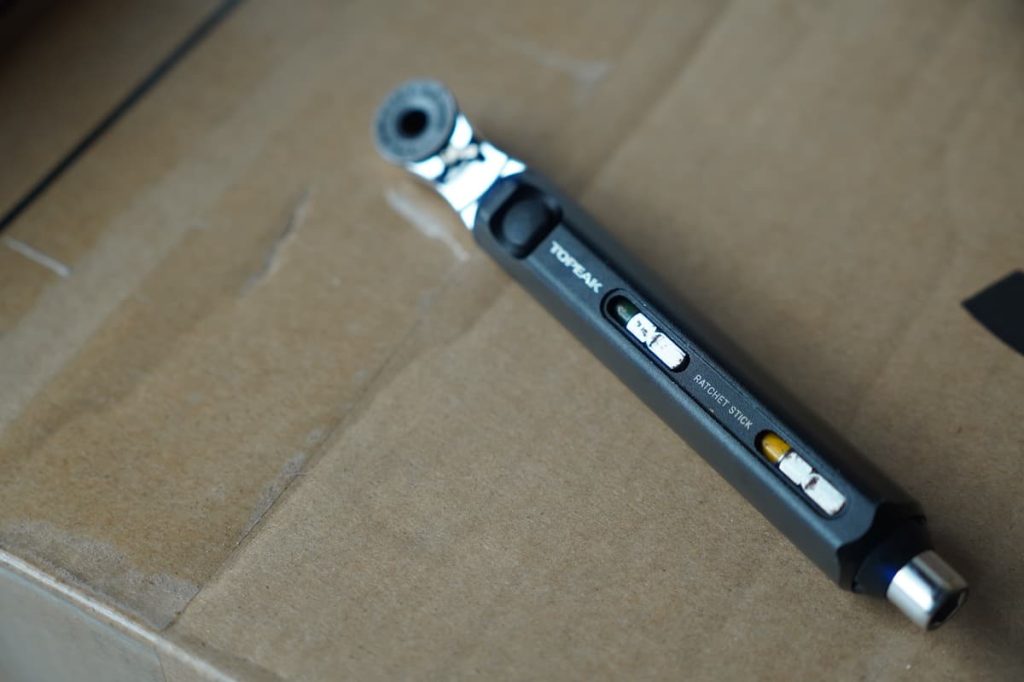
The main part of the tool without the extra bits is a godsend. Not only do you have all of your common drivers in one place, but they fit into a ratchet tool that makes it super easy to install bike parts. Instead of trying to spin an Allen wrench 20 degrees for 100 repetitions until you finally tighten down a bolt, it’s so much easier to use a ratchet. No more pulling off your Allen wrench, resetting it, then turning. The ratchet does it all for you. And the quick direction change lever has you going from tightening to loosening in a second. It’s a bit pricey at $54, but so, so worth it if you are wrenching on your bikes as often as I am.
Smallrig folding tool
I bought this tool specifically to have the smallest collection of common bike tools possible. It’s perfect. It fits into the watch pocket of my jeans so I forget it’s there, but it’s ready in a second when I quickly need a 5mm Allen or a Phillips head screwdriver. I don’t use the Torx bit much, but it’s great to have that Phillips there in addition to the common metric hex sizes.
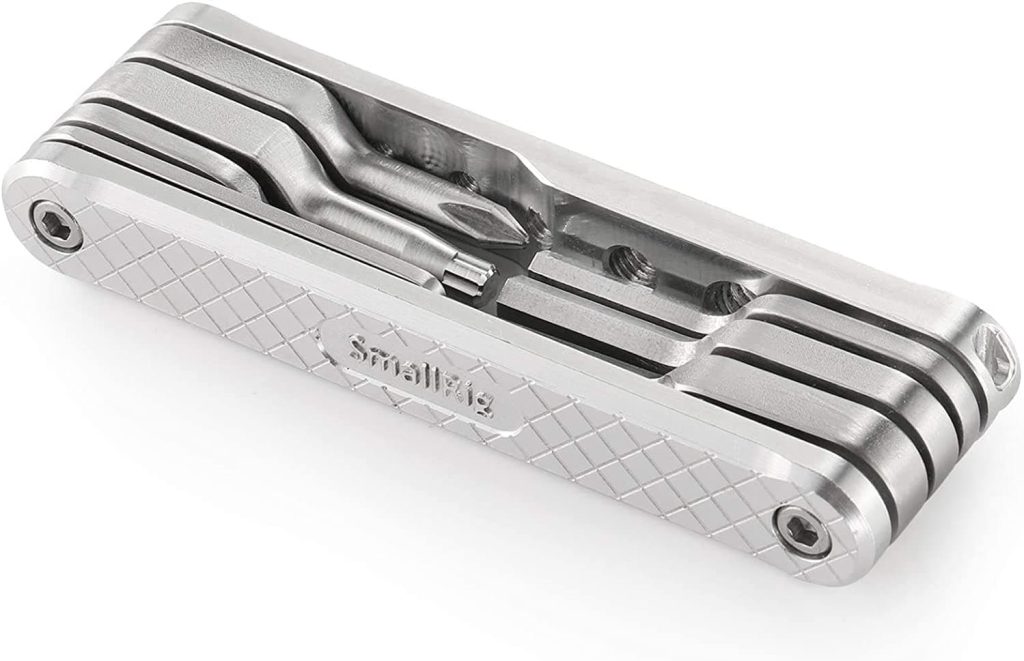
In fact, it’s not even a bike tool. This is a camera tool meant to be used for adjustments on tripods and other filming equipment. But universality is the whole point of metric bolts, and so whether those bolts are holding a camera quick-release plate or a bike headlight, the tool still works! And it’s just $20, making it a great deal for a tool that puts all of the most common bike drivers in something the size of your thumb.
The big flat thing is mostly for screwing in the 1/4-20 tripod plates used in photography, but I often use it as a pry bar. I’m thinking of filing down the end to make it a bit narrower and work as a smaller flat-head screwdriver as well.
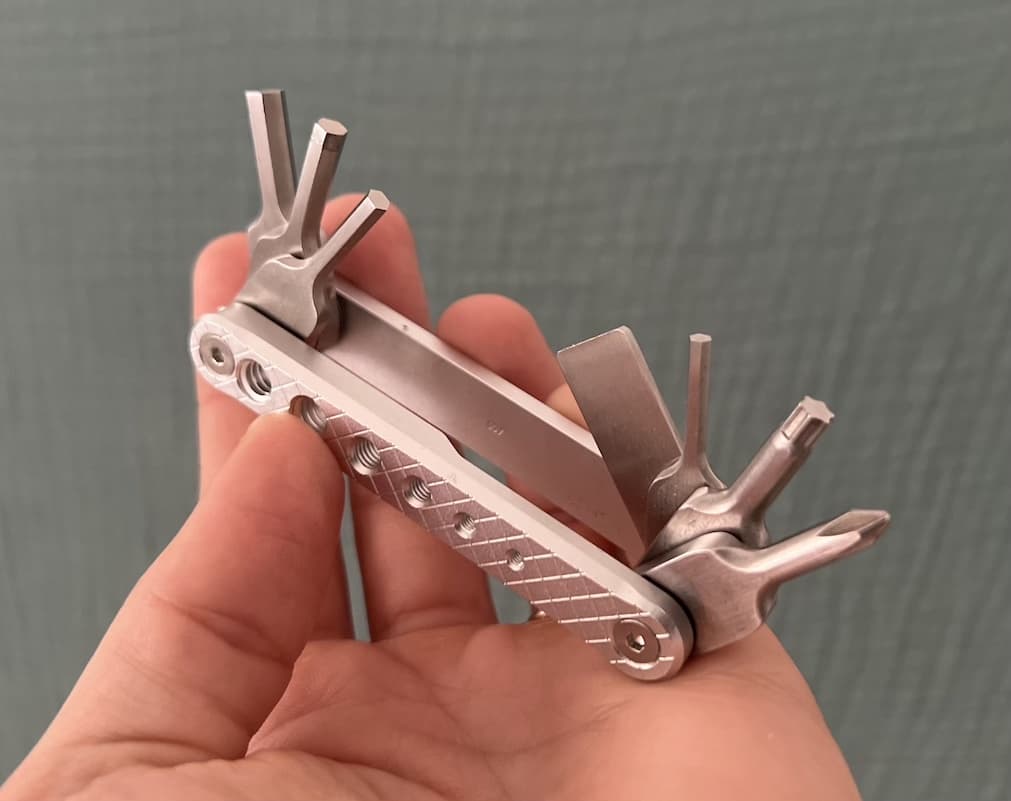
Chrome Industries Barrage
The Barrage backpack is a cyclist’s dream. The rolltop, waterproof design means you can get caught in a downpour and not worry about your stuff getting wet. The 18-22 liter size (depending how rolltop you get with your rolltop) makes it good as an everyday bag, though sometimes I wish it was a tad bigger.
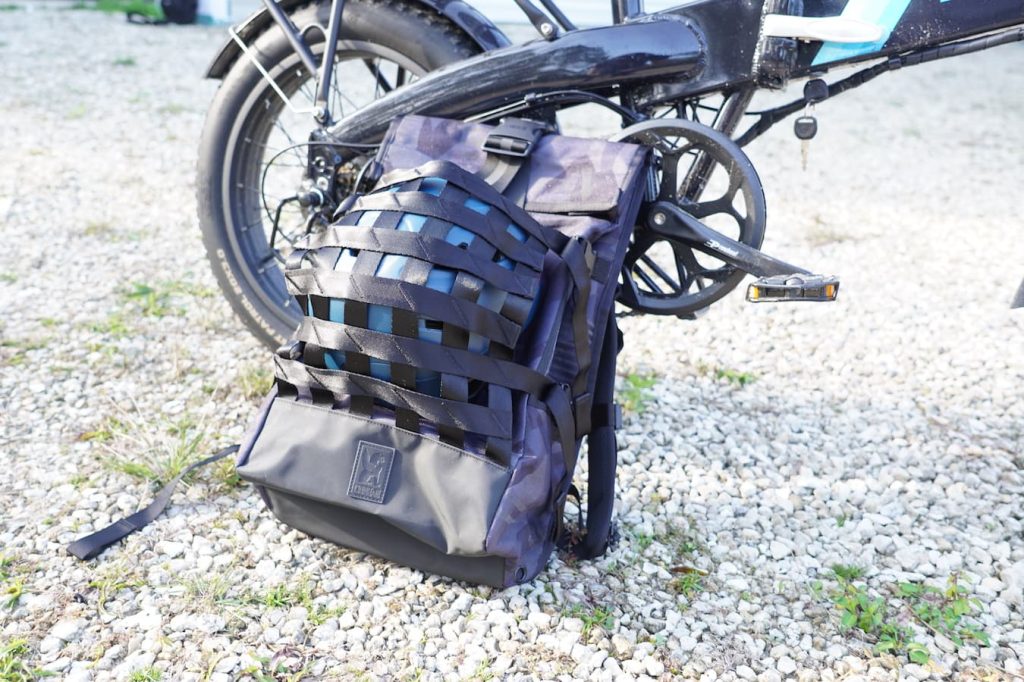
When I do occasionally need to cram more than 22 liters of stuff in the bag, there’s an outer net with adjustable straps for adding bulkier items like a jacket or a helmet. And there are side pockets that are perfect for water bottles, U-locks or other quick-grab items.
The orange interior is amazing for trying to find small things you drop inside as it offers an ultra-high contrast background. Never lose your sunglasses or wallet again!
There’s even a laptop sleeve that fits up to a 15″ computer.
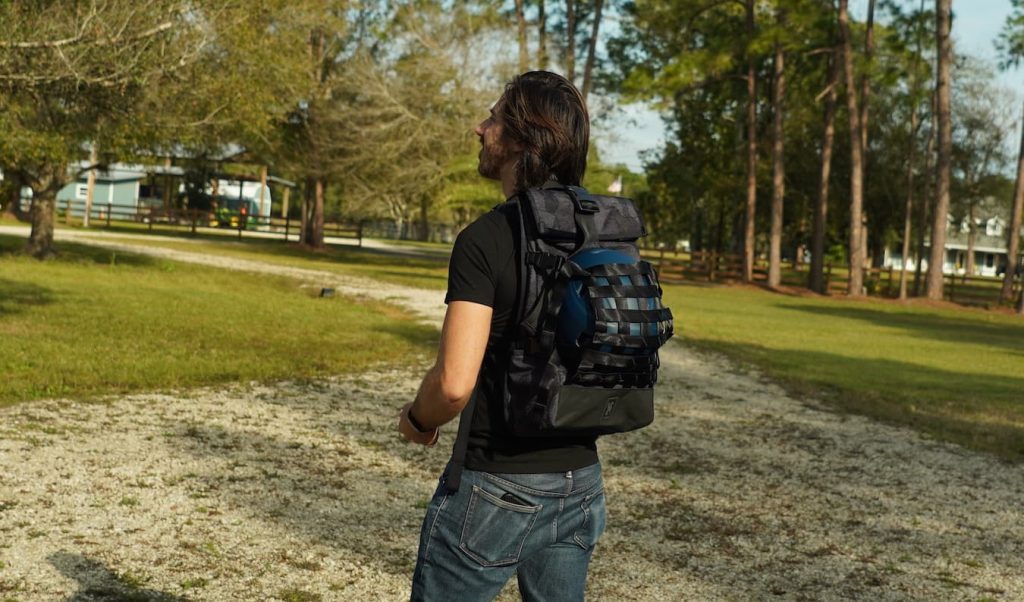
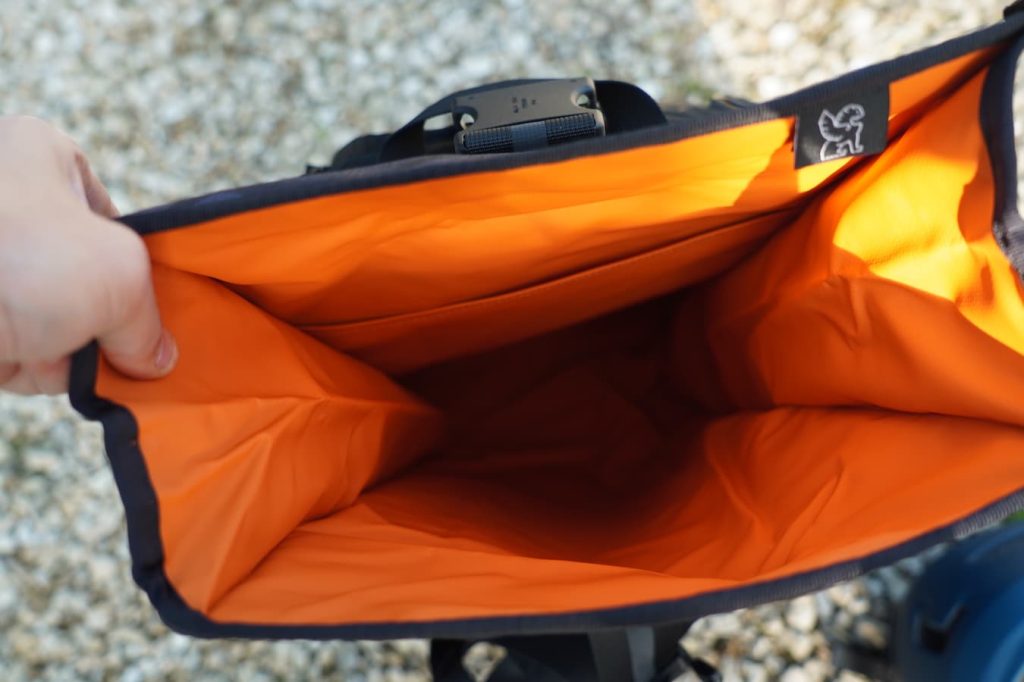
There are a pile of color options to choose from, so you don’t have to go with boring black like me. Each will set you back $160, but good backpacks don’t come cheap. These are well made and come with Chrome Industry’s lifetime guarantee.
Cotopaxi Allpa 35L backpack
To be fair, this isn’t really a cycling backpack at all. But I use it as a combined cycling and travel backpack. In fact, it’s the best travel backpack I’ve ever owned and I don’t say that lightly.
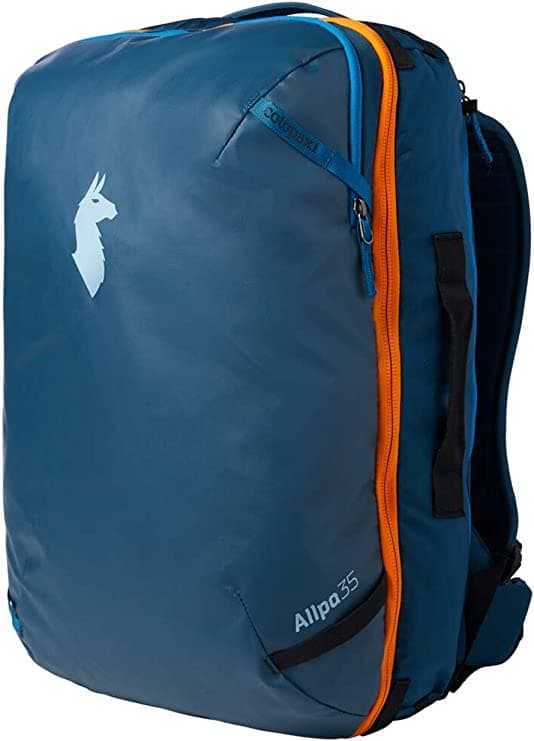
The high-quality manufacturing, sheer wealth of pockets (both internal and a second smaller front external pocket), and the interior dividers make it a useable daily backpack. It’s got a rain cover for when the sky opens up. It’s got a breathable mesh liner to keep your back from getting (as) sweaty. It’s got handles on the tops and sides in case you need to toss it or carry it like a duffel.
At 35 liters, you can start losing stuff in a big backpack. But the Allpa’s dividers make it easy to keep track of small and larger things.
That makes the bag perfect for daily bike rides and cross-the-world trips. When you’re biking, it’s got good straps that synch down against you so the bag isn’t bouncing. When you’re traveling it fits as carry-on luggage (and slips under the seat in front of you on most planes that aren’t little regional jets).

I’ve had mine in eight countries this year. I’ve had it on countless bikes, scooters, and motorcycles. Hell, I even tied it to the back of an electric street-fighter motorcycle this summer. This bag has been through everything and has yet to complain once. It’s $200 and it’s worth every penny. You can even save $10 by getting the version that will be mystery color (they use production surplus material so each one is unique).
And if it helps, I can tell you I’ve actually had mine for over three years and it’s in almost as good condition as the day I got it.
ABUS sent me their Alarm Box 2.0 vibration alarm and I’m pleasantly surprised by how much I like it.
It’s not cheap and plastic-y feeling like many of these bicycle alarms out there. It’s got good metal construction, mounts securely, and is a loud impediment to any thief getting away with your bike. I wish I had it installed before I had a bike stolen earlier this year, but at least I have it now!
It’s priced at $78, which doesn’t even feel that expensive for what you’re getting. Just be sure to keep your key handy since it’s an annoying thing to disengage if you’re fumbling for the key when you accidentally set off your own vibration alarm.

Redshift pedals
These are the coolest bicycle pedals I have ever seen in my entire life. Hands down.
They’re also quite expensive, so prepare yourself. But trust me, they’re awesome.
You swap these in place of your existing pedals and then – boom! – you’ve got headlights and tail lights that move with you.

Each pedal has two removable LED lights, one facing forward and one facing backward. But you don’t have to make sure you get the orientation right, since they have some sort of witchcraft in them to automatically tell which way they are facing and light up with the correct color. I’ve tried flipping them quickly to trick them, but they always instantly change color to keep white facing forward and red facing the rear.
Plus there’s a 5th LED module that mounts on your seat post for a standard tail light. It’s wild!
And the fact that the pedal lights are moving in a circle makes them even more obvious to drivers. The only thing that stands out more at night than a bright LED light is a bright LED light in motion.
The set of pedals costs $140, which is not cheap, but then again they’re not just smart lights but also a good set of pedals. For another $40, you can get that fifth module to mount on your seat post.
You can see the pedals and tail light in action below. That bright headlight isn’t part of the kit though –that’s the next light below.

Fenix E09R 600 lumen flashlight
This little thing is a beast. It throws light like a much larger tool, yet is the size of a chapstick.
If you just saw it on a table, you’d think “$40 for that?!” But as soon as you turn it on, it’d make sense.
It’s technically not a bike light, but I use it as one because it’s easy to pop on and off the handlebars on a cheap $8 mount allowing it to serve double duty as a headlight and a pocket flashlight. And since it recharges on USB, you never deal with batteries.
The video above with the RedShift pedals has the Fenix E09R mounted, which is what is throwing that big beam way out of in front of the bike.

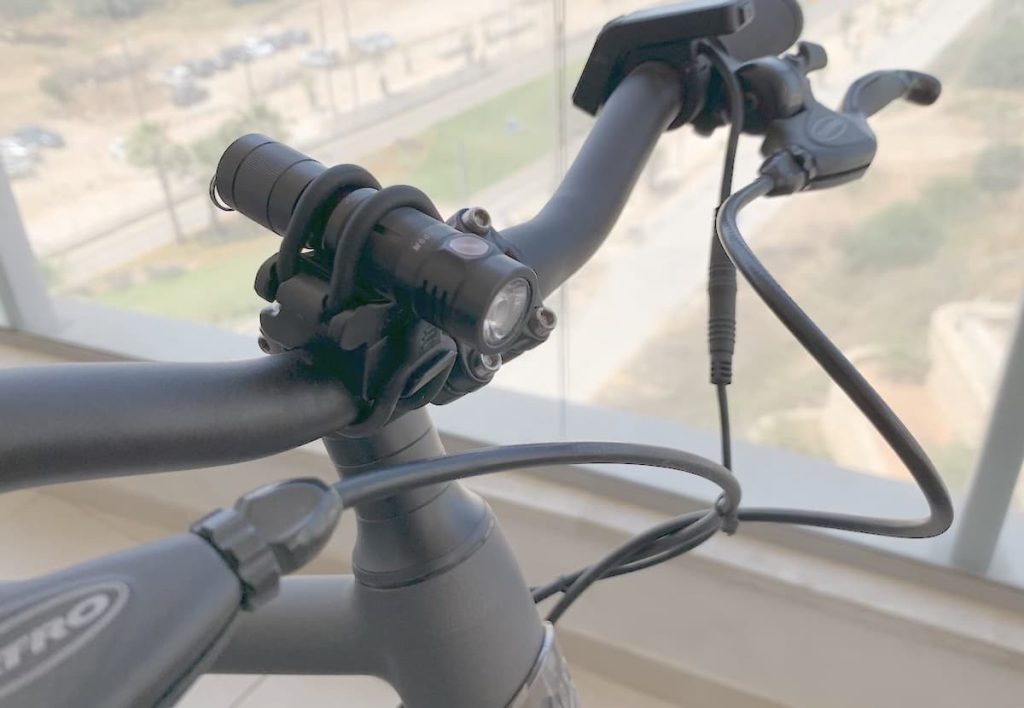
Thousand Traveler Light
The cool thing about these Traveler Light units is that instead of some annoying, hard-to-reach clicky button that forces you to cycle through a number of flash-pattern programs to find on and off, these lights use a spinny-knob.

I’m not sure spinny-knob is the industry term, but basically you just turn the entire unit like a rotary switch. That lets you choose from different flashing programs and light intensities. They’re also held on by magnets that let them separate from the rubber mounting base so that you can just yank them off easily and toss them in your pocket if you don’t want them stolen when parking outside (or for when you occasionally need to bring them inside to charge on USB).
These are also pretty pricey at $70, but they sure do work well!
Triple Eight MIPS helmet
Amazon tells me that I’ve bought seven Triple Eight helmets. That’s some serious commitment. I’ve mostly bought their cheaper model, the Sweatsaver, since I like the way it looks and it’s a minimalist helmet for my videos.
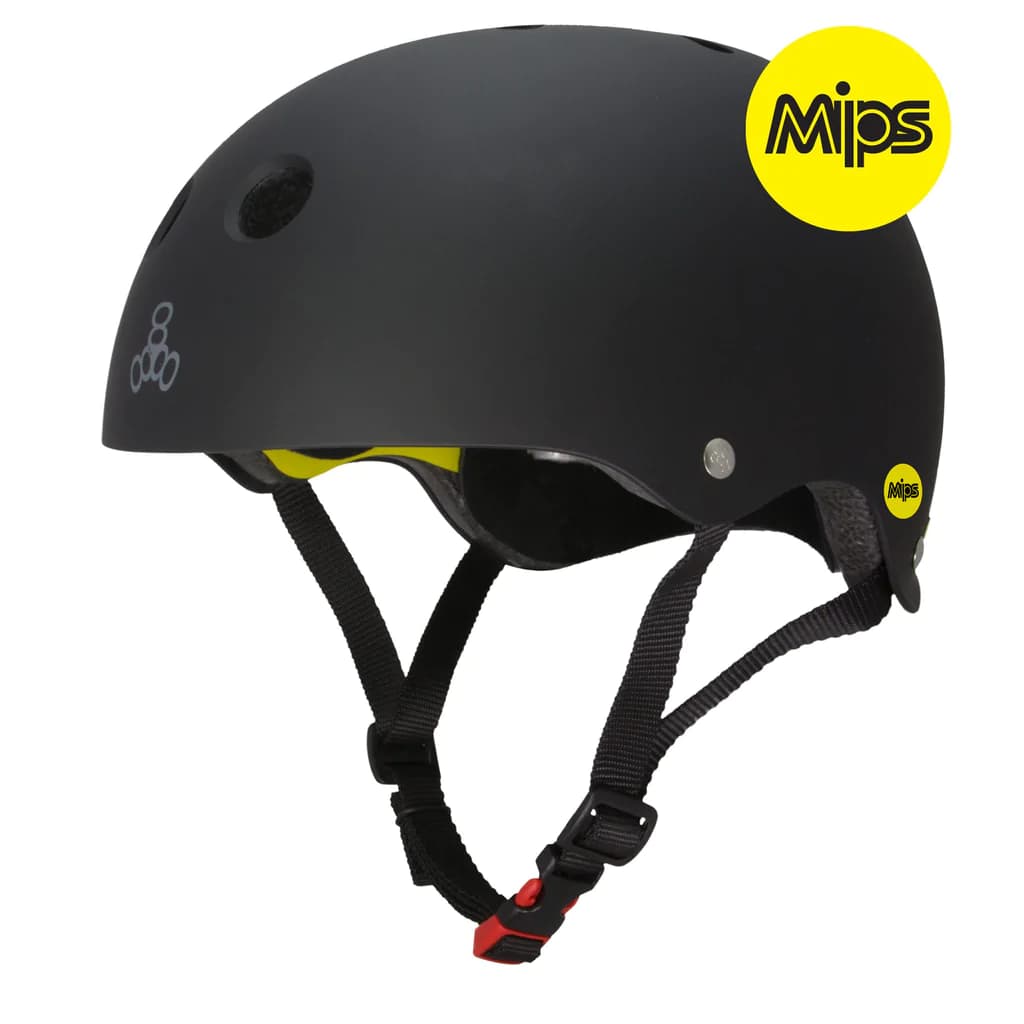
As perhaps the most prolific e-bike reviewer on the internet, I try to take safety seriously to set a good example. And that means always riding with a helmet (outside of a few extenuating circumstances). But I don’t want a big, bulky, funky-looking, nerdy bike helmet to ruin my shots. So I use Triple Eight’s helmets since they look cool and disappear into the shot with their plain design. But since their Sweatsaver helmet is really more of a skateboarding helmet and doesn’t have any safety certification, I recently upgraded to their Dual Certification MIPS helmet. It’s a much safer alternative but still looks great!
To be fair, I don’t normally use this helmet when I’m not filming. I have other helmets for those (see below). But as far as a good-looking and also safe helmet, this is my go-to whenever I’ve got a camera pointed at me. Not bad for a $79 helmet!
You can see the helmet in action in the video below.
Abus Pedelec 2.0 helmet
The Abus Pedelec 2.0 helmet is one of my new favorites for all of my leisure rides. It’s got great ventilation (something the Triple Eight MIPS helmet above lacks), yet still looks pretty minimalist too.
And I LOVE that it has a built-in rear LED light. Cyclists already wage a losing war to be seen by car drivers. At night, that can be an uphill battle. Having a built-in red tail light in the back of your helmet is a great way to put a big flashing notice of your presence right at drivers’ eye level.
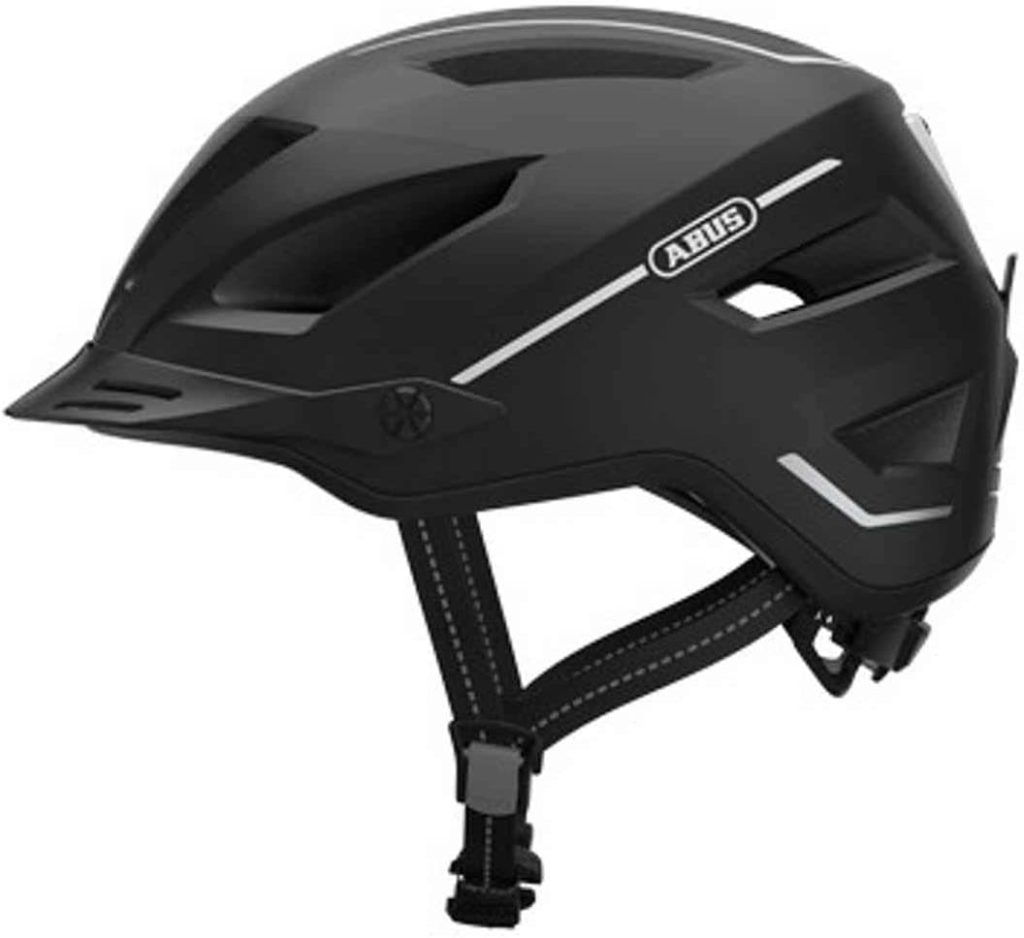
This is definitely one of my most common helmets for riding, day or night. And at $110, it’s reasonably priced for a safe and well-lit helmet.
Electric Bike Company custom-painted helmets
This is one of two things in this list I haven’t personally tested, at least not exactly.
I’ve had multiple visits at Electric Bike Company’s factories in Newport Beach, California. There I’ve seen firsthand how they build their electric bikes locally, and I’ve even tried my hand at painting a bike frame in their custom paint shop.
But recently they added a new item to their product catalog: custom-painted bike helmets. You can choose your paint color, your trim color, your strap color, and you even get front and rear LED lights!
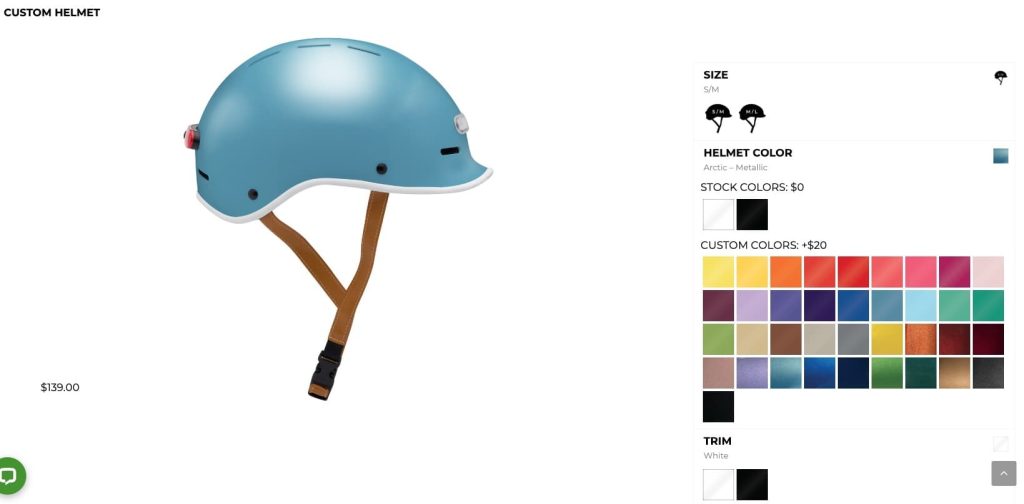
Since they already have a huge professional paint facility, they can now do custom helmets that match your bike or are any paint scheme you want. It’s a pretty awesome-looking setup and I want to try one of these things out the first chance I get!
Muc-Off Clean Protect & Lube kit
For a quick clean job after a trail ride, I’m not against just aiming a hose at my bike and letting rip. But occasionally I try to give my bikes a deeper clean that actually helps protect them and keep them in better shape for longer.
I’ve been playing around with the Clean Protect & Lube kit from Muc-Off, and I’m quite happy with it, especially for the modest $32 price. The pink cleaning spray helps cut through nasty dirt and grime, which is especially useful for city commuter bikes that get a whole other level of urban crap caked onto them. The MO94 is like WD40 except better, and not harmful to some bike parts the way WD40 can be. Plus it’s actually got some lube in it, whereas WD40 is just a water displacer, not a real lubricant. But for a serious lube job, the kit also includes ceramic lube. Muc-Off has both wet and dry ceramic lube, so you’ll want to choose the best for your application. The dry stuff is good for me since it doesn’t rain very much where I do most of my riding in Tel Aviv. If I was in Florida though, I’d opt for the wet lube.
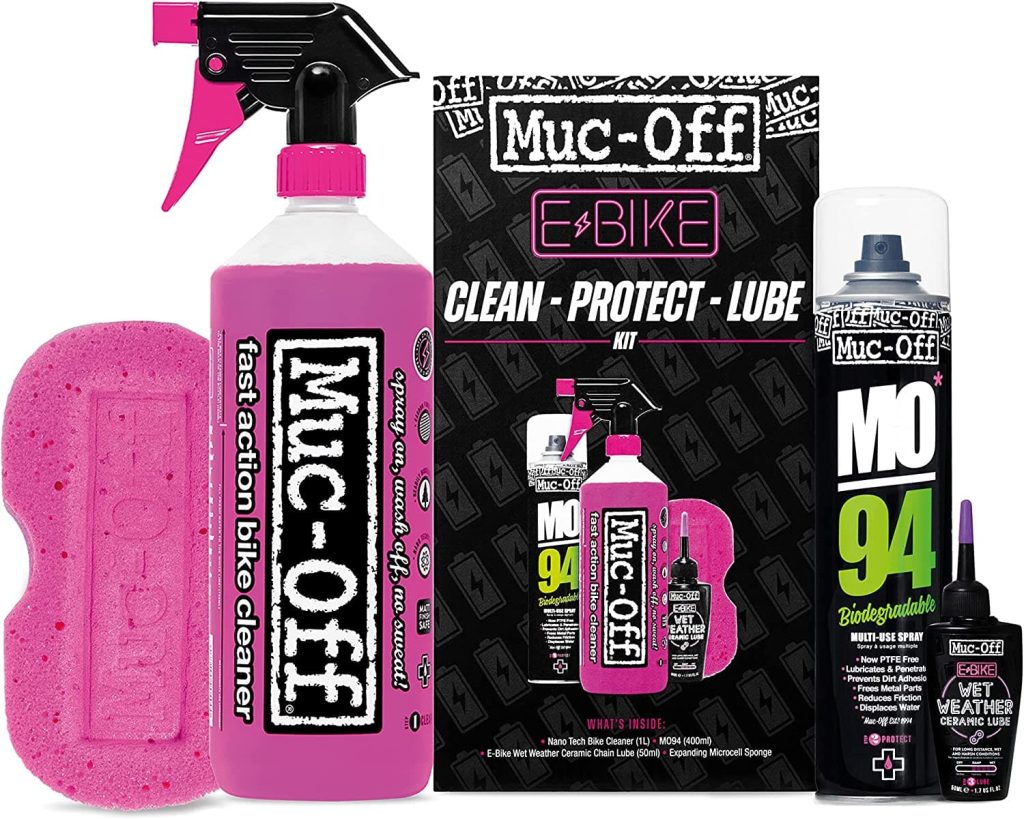
The kit also has a nifty expanding sponge that probably isn’t much different than any other good quality sponge, but hey, it’s pink! And the kit also came packaged with an e-bike drivetrain tool for me, though I didn’t get to test it because my mid-drive e-bike uses a belt-drive. But if you have a mid-drive with a chain, you stick the tool in the chainring and it basically momentarily defeats the freewheel in the crank, allowing you to spin your chain backward and clean the chain more easily.
Most people just accomplish this by shoving an Allen key in the chainring, but Muc-Off’s tool is a slightly more elegant way to do it that won’t scratch your bike up the way an Allen key would. But let’s be honest, you could carefully accomplish the same thing with any hunk of metal like an Allen key.
Jackery Explorer 300
I bought this little power station to be able to top-off my e-bike batteries when I’m in the field. It’s small and easy to carry. It’s fairly lightweight at around 7 pounds, and it can store around half an average e-bike battery’s charge.
That means I don’t use it as a primary charging source, but rather just as a way to get some more energy back into my e-bike. For example, if I’m stopping for lunch for an hour, I can spend that time recharging my e-bike, not just my stomach.
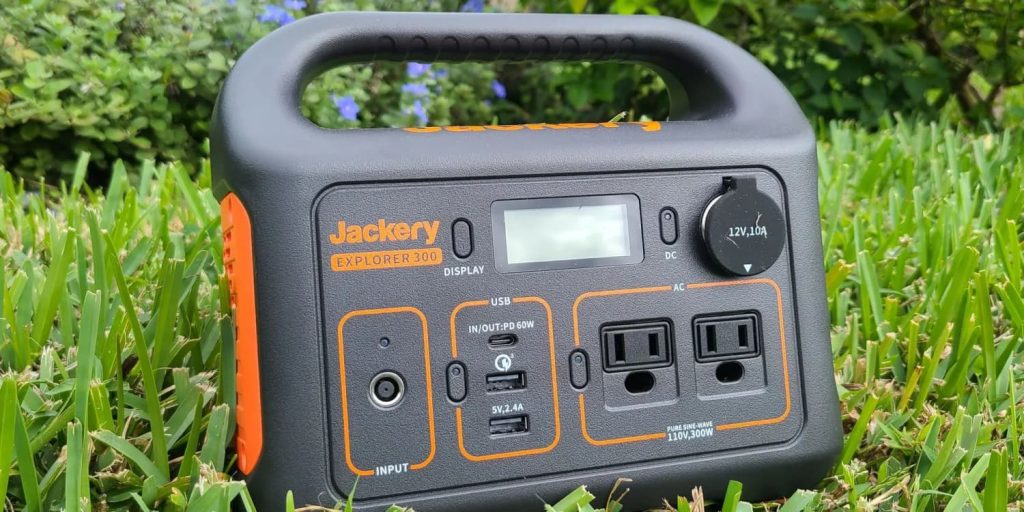
It wouldn’t make a great primary charger due to it only holding around 300 Wh (and costing a whopping $299 for that small amount of energy). But when you’ve set up a base camp in the middle of nowhere, it’s much more effective than trying to plug your charger into a tree trunk or a picnic table.
Peak Design
Peak Design is probably better known for their camera mounts and other gear, but they’ve recently gotten into phone mounts too.
And they got me with their clever marketing. I received their phone case for free at an event earlier this year. And the case is fine, no complaints there. But the magic is really in their quick release mount built into the back of the case. If you’re familiar with other quick release cases like QuadLock, it’s kind of like that, but better.
And so I bought their Universal Mount so I could make use of the cool case. The Universal Mount is actually on my scooter right now, but I can just as easily switch it back onto my bicycle or motorcycle. It’s easy to use and makes it so I can see my GPS directions.

The whole idea of the Peak Design mount is that it is super secure yet releases in an instant with a single finger. What’s not to like? Well, the price, for one. The case (which I got for free) costs most people close to $50. Then the universal bar mount, which I bought, was close to another $50.
That’s a lot just to mount your phone to your handlebars. But if you’re on and off your bike (or scooter, or motorcycle, or whatever) several times a day and you use your phone for navigation, it’s a beautiful system that makes it easy to go back and forth.
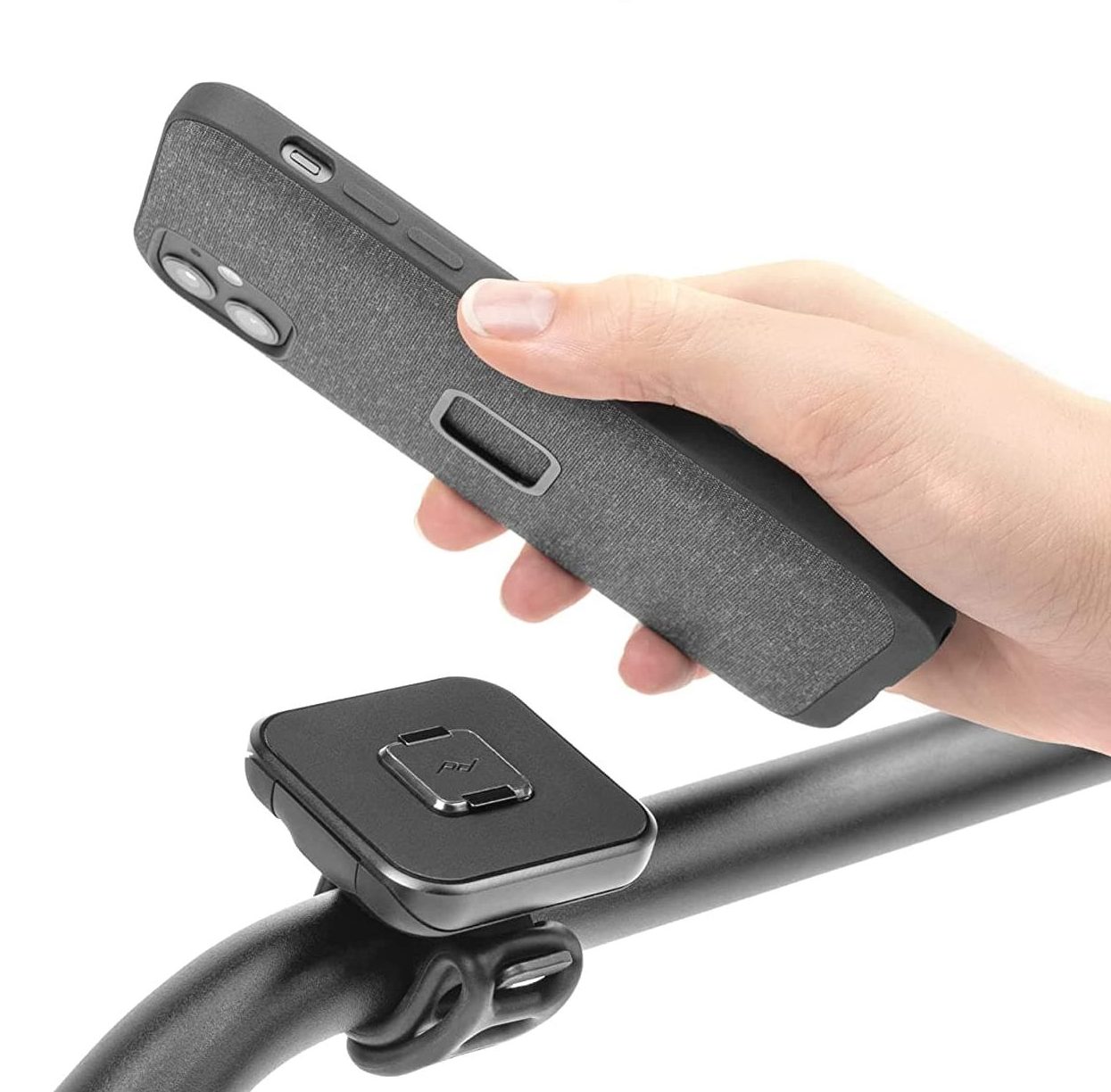
If you want a MUCH cheaper option though, check my next suggestion below.
ORIbox stretchy phone mount
I have bought three or four of these things now, some for me and some for family members as gifts.
When it comes to a truly universal phone mount for bikes, this is the one. It stretches to fit literally any phone and literally any handlebar.

And it’s surprisingly strong. It’s meant for holding your phone on a bicycle bar, but I often use them when traveling for on-site motorcycle test rides. I bring them because of the simple fact that they stretch to fit anything. And they’ve had no problem holding my phones to motorcycle bars while battling 80+ mph winds. The phone dances around a bit at that speed since it isn’t a super rigid holder, but it is strong enough to withstand it. So you better believe it’s going to work on your mountain bike or commuter bike.
And at less than $10 (marked down from $12!), this sucker is the most affordable thing on this list!
Xiaomi air pump
Having a manual air pump is important as a backup, but these days I keep electric pumps around because they’re just nicer to use. They take a few seconds longer (especially on fat-tire e-bikes), but I don’t even need to be there while they work.
I just set the PSI, push the on button and let them go to work. They’re loud and annoying in that sense, but they get the job done almost effortlessly. And they even turn off automatically when you reach your desired pressure.
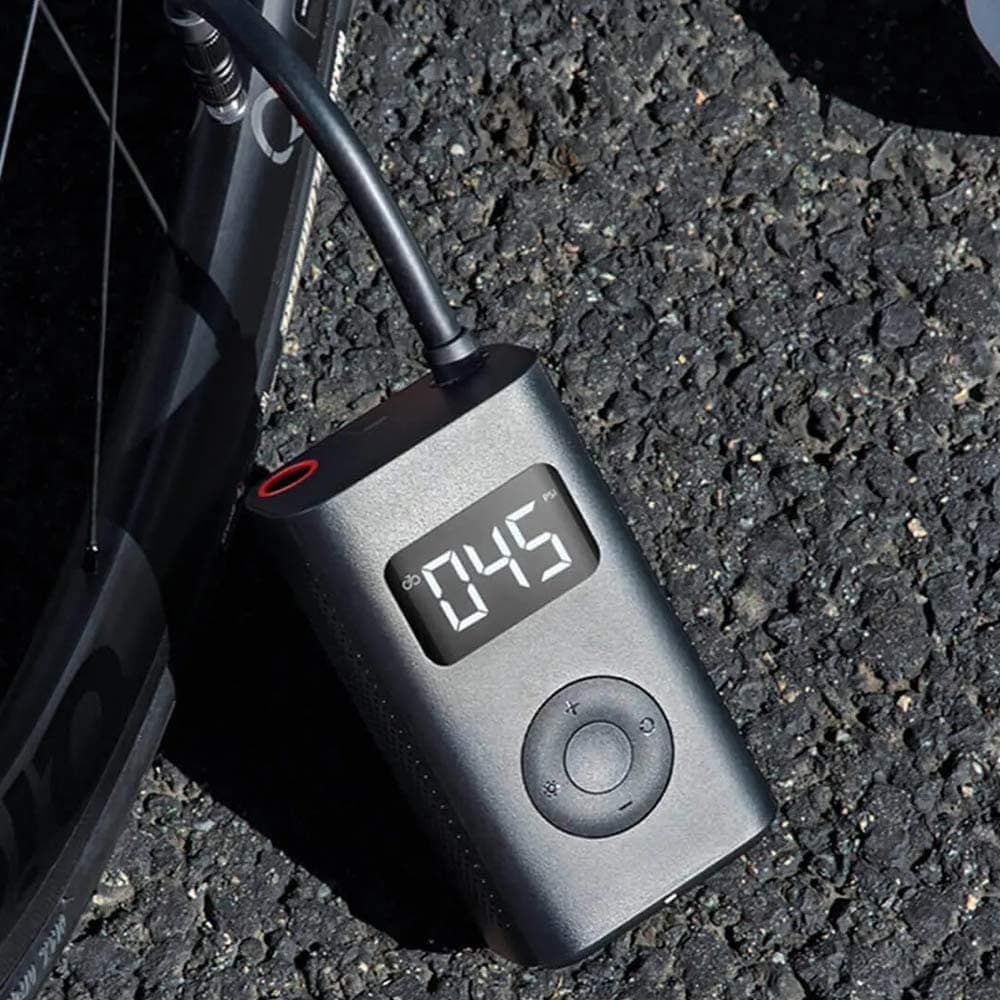
This Xiaomi model was my first electric pump and still a great buy. There are cheaper models out there, but this one at $50 is worth it. I bought it almost on a whim, not expecting much and just hoping it would be decent. It turned out to be a huge addition to my e-bike tool bin. I love this thing and I can’t believe I was hunched over a floor pump for so many years without it.
I haven’t actually done an inflate-deflate-reflate test to see how many flat tires I could fill on a charge, but based on how often I need to charge it, I’d guess I get around 8-10 smaller bike tires and 3-4 fat tires per charge. That might not sound like much, but how often do you fill up that many tires in a row?
CYCPLUS CUBE tiny electric bike pump
I have one of these CYCPLUS CUBE pumps on the way from the company as a media sample but haven’t had a chance to test it out yet. So I can’t tell you how well it works, but I can tell you that I’m excited about the idea. Basically, it works just like my bulkier Xiaomi pump above, but it’s small enough to fit in my pocket.
Because it’s so small, I will only be able to get a tire or two out of it – this isn’t for filling 10 tires in a row. But as a small emergency pump, it’s a cool piece of kit that I’m looking forward to testing. They’ll be running a crowdfunding campaign for it soon, but if you don’t like the risk of crowdfunding then you might want to wait until you can buy it retail.
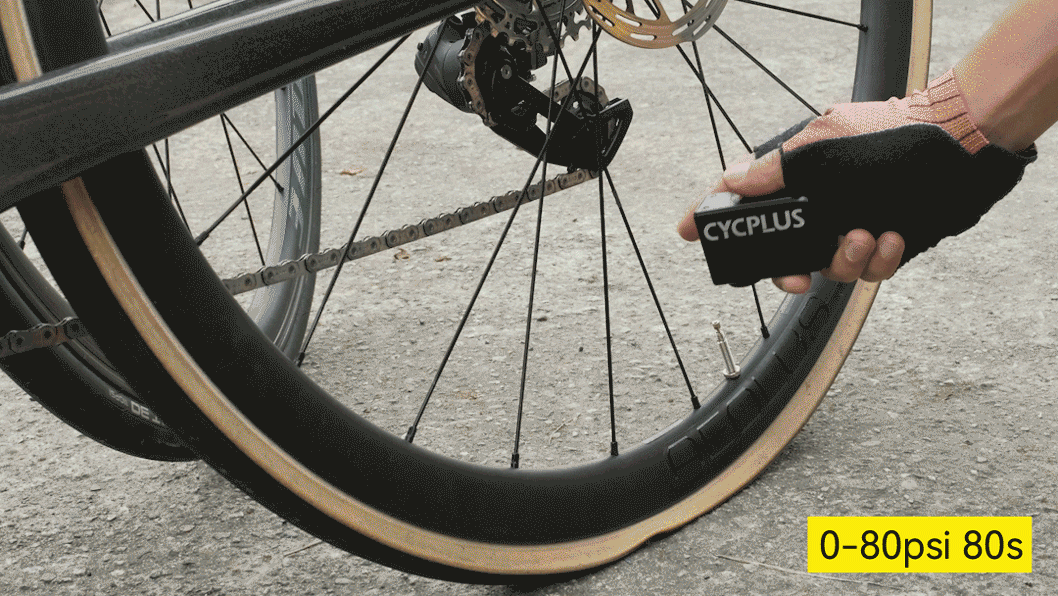
What should I try next?
Is there anything I missed that you think I should check out? Let me know what your favorite piece of bike gear is in the comments section below.
I’m always looking to waste spend my hard-earned money on new bike gadgets!
FTC: We use income earning auto affiliate links. More.
[ad_2]
Source link

